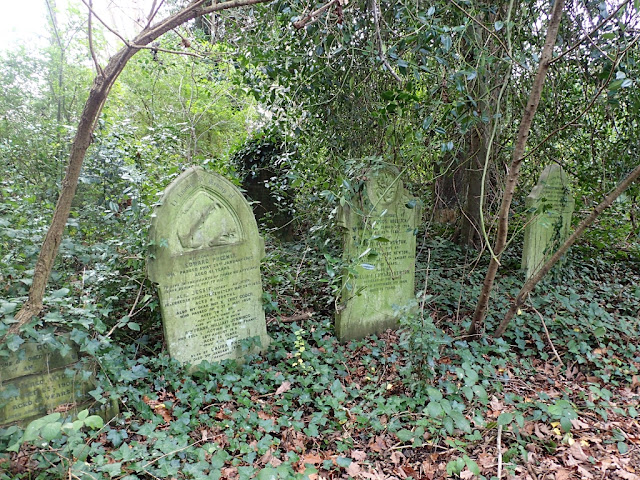I had to go to London just before Xmas. So far south always offers an opportunity to add a few PSL ticks. The cemeteries in Orkney are manicured and really no place for wildlife, things are better in Perthshire, but in Lewisham there are two large and wild cemeteries at Nunhead and in Brockley. So an opportunity to contribute to Cemetery Wildlife Watch (an iRecord activity - https://irecord.org.uk/activities/summary?group_id=2043&implicit=f )
 |
| Nunhead Cemetery entrance. |
 |
| Brockley and Ladywell Cemetery, an area of good habitat. |
Nunhead was first on the 17th and the star find was surprisingly a snail, Thames Door Snail Balea biplicata which is quite a rare beast, its range has been contracting in recent years.
 |
| Balea biplicata. |
A new moth for me, a bagworm.
 |
| Psyche casta, larval case. I didn't check if the cases were occupied. |
There were plenty of Harlequin pupal cases, and one adult.
 |
| Harlequin Ladybird Harmonia axyridis. |
Both cemeteries were full of Ring-necked Parakeets of course. The best bird was quite a surprise, a Green Woodpecker in Brockley Cemetery afforded some close views.
Brockley and Ladywell Cemetery also produced some good inverts. Highlight was probably 24-spot Ladybird, I found two pupae. To be honest I had no idea what these were, plant/animal/fungi??? But fortunately PTS did know these (thank you).
 |
| 24-spot Ladybird Subcoccinella vigintiquattuorpunctata. |
Other highlights from Brockley were this mirid.
 |
| Deraeocoris lutescens. |
Another snail, but not such an uncommon one.
 |
| Hygromia cinctella. |
There were a couple of barkfly species. One was identified for me Valenzuela flavidus (further thanks to PTS). The other keyed out to Ectopsocus petersi, but there is some doubt that the key gives a reliable result, and it may be that gendet is required to be certain of this species.
 |
| A male Ectopsocus petersi, maybe. |
 |
| Valenzuela flavidus. |
I've been a bit quick to tick E. petersi PSL-wise, and on recent infomation I should probably leave it as pending. We'll see what the verifiers on iRecord think.
The only botanical PSL tick was Cherry Plum, Prunus cerafisera, I found some young plants sprouting near a more mature tree of this species. I did find the moss Tortula muralis as well, I have seen it before, but it wasn't listed, so sort of a tick.
A last tick was a Collembula, Dicyrtoma fusca, which I haven't recorded before. These were common at both cemeteries along with the very common Dicyrtomina saundersi.
 |
| Dcyrtoma fusca. |
 |
| Dicyrtomina saundersi. |
Of course there were a number of unidentified/unidentifiable things that I photographed. This hymenopteran is a Cynipidae, a gall wasp (thanks BL). Which species though is an altogether more challenging, and impossible without a specimen, issue.
 |
| A gall wasp of some sort.... |
All beastie photos were taken with the Olympus Tough TG4. In the end I regretted not taking the EM-5 with the 30mm macro, I will next time.
Some random cemetery views follow. Taken with the TG4 or Pixel 7.
 |
| A Nunhead grave. |
 |
| Brockley and Ladywell Cemetery views. |
























